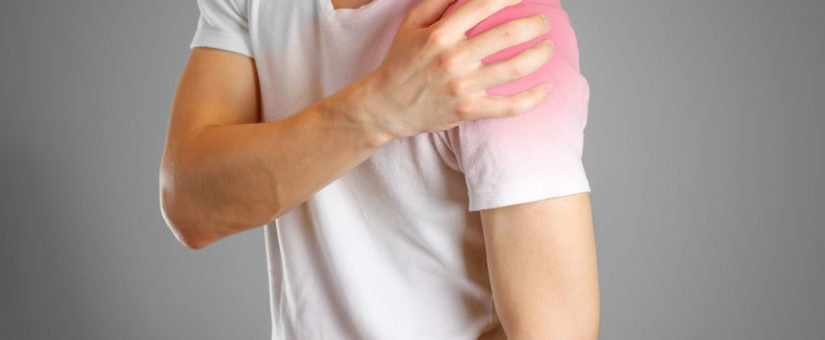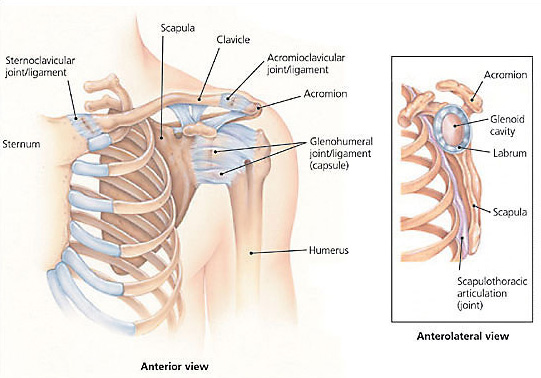
Using Applied Kiniesiology to Correct Shoulder Dysfunction
- Posted by admin
- On December 7, 2017
- 0 Comments
By Dr. David Brown
The shoulder is an intricate joint involved in many bodily movements, from simple use of the hand to complicated athletic skills. In order for the shoulder to function properly, each of its many articulations and integrated muscles must all be working correctly and harmoniously. When they are, the shoulder achieves great range of motion and moves with ease. This flexibility, however, can also make it susceptible to injury and trauma. Without normal use of the shoulder, everyday tasks may become difficult, and life can be disrupted. Thankfully, Applied Kiniesiology is a gentle and effective way to address and correct the underlying cause and pain associated with shoulder dysfunction.
Parts of the Shoulder:
The shoulder is the joint where the humerus (the upper arm bone), the scapula (the shoulder blade), and the clavicle (the collar bone) connect. It is comprised of five articulations. The glenohumeral articulation is the main ball and socket joint located between the head of the humerus and the glenoid cavity of the scapula. Where the clavicle meets the acromion of the scapula is called the acromioclavicular (AC) articulation. The sternoclavicular (SC) articulation is where the clavicle meets the chest bone (sternum). The scapula meets with the ribs at the back of the chest at the scapulothoracic articulation. Finally, there is the subacromial articulation, which is not officially recognized as a true joint because it isn’t completely enclosed. Functionally, however, it is important to consider it because it works just like the others. It is formed by the acromion process, the acromioclavicular joint, and the coracoacromial ligament, which create an arc and combine with the deltoid.

The first three articulations are bony, whereas the second two involve soft tissue instead. Soft tissue plays a major role in shoulder movement. In fact, the coordination of more than 20 muscles either directly or indirectly is required for proper motion of the shoulder to occur. Due to the involvement of many bones and the complex integration of muscle activity, there are many possible reasons for a shoulder to become injured or function improperly.
Common Shoulder Problems:
Slipped Bicipital Tendon:
The bicipital tendon is the fibrous band that attaches the biceps muscle to the scapula. Sometimes this tendon can slip out of its groove when jarred while the biceps muscle is contracted. For instance, if two people are holding something up at either end and one person drops their side, the arm of the person left holding the heavy object could be severely jarred and cause the bicipital tendon to slip out.
Ligament Injury:
The fibrous bands that attach bones are called ligaments. It is common for one of the many ligaments found in the shoulder to be injured following any trauma to the shoulder.
Acromioclavicular Injury:
The joint between the collar bone and shoulder blade is often injured during athletic activity. In extreme cases, it may require surgery to correct the damage caused to the ligaments involved.
Dislocation:
Dislocation occurs when the arm comes completely out of its socket. This is often caused by severe injury but can also become a recurring problem for those who’s muscles and ligaments of the shoulder function improperly.
Arthritis/bursitis:
Arthritis is inflammation of the joint whereas bursitis is inflammation of the bursa, the lubricating membrane of the joint. Rather than being a diagnosis in and of themselves, these inflammatory conditions are often just a symptom of an underlying problem with one or more of the many muscles involved in shoulder movement.
Frozen Shoulder:
Frozen shoulder is a common condition in which an individual can not raise their arm past a certain point. Many doctors will blame arthritis or bursitis, but as mentioned above inflammation is usually secondary to a problem with the muscles firing properly and harmoniously.
Applied Kiniesiology to the Rescue Once Again!
When one injures their shoulder, many health care professionals are able to identify specific damage to a ligament, joint, or muscle. As treatment, they may manually reset the joint, immobilize the joint, or sometimes even repair the injury surgically. However, the secondary muscular imbalance that almost always accompanies the initial injury (or maybe was even the cause of the initial injury) is often left untreated. Not addressing and correcting this imbalance leaves individuals susceptible to recurring problems with the shoulder. Thankfully, Applied Kiniesiology is an effective way to quickly identify and correct the underlying problem, and many patients will see an immediate improvement in range of motion in their very first appointment! If this is you or one of your loved ones, call the office today to set up treatment. There is no reason to go on suffering!

David Brown, DC, DIBAK



